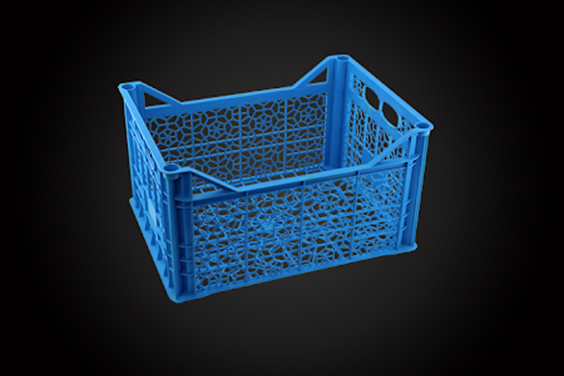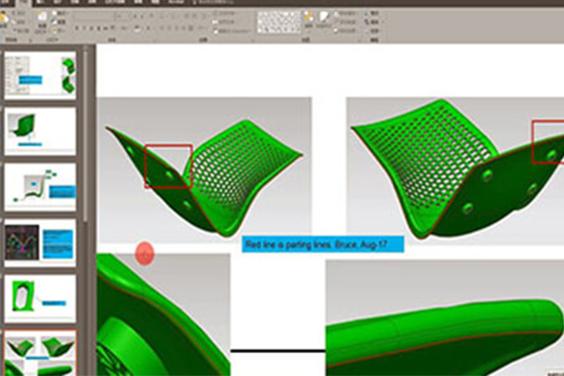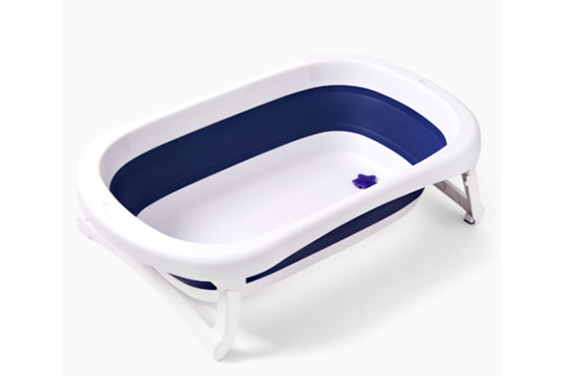Sink Mark: What is it and How to Avoid in Your Plastic Injection Molding
- Home
- > Blog
- > Sink Mark: What is it and How to Avoid in Your Plastic Injection Molding
Share :
Share :
Sinks are frequent injection moulding flaws that appear in the thicker regions of moulded objects. The thicker parts will typically take longer to cool because they comprise more polymer. The section that comes into contact with the mould steel starts to cool quicker than the rest of the part. As the particles in the thicker regions begin to compress, they draw in on themselves, resulting in a sink defect.
Thankfully, there are tons of ways to prevent them. We are going to look at what sinks are and how to prevent them in your plastic injection moulding.
What is Sink Mark
Sink marks show as depressions on a moulded part’s surface. These depressions are usually quite little, but since they reflect light in diverse angles, they are often extremely obvious. Sink marks are visible depending on the part’s colour and surface texture, thus depth is only one factor to consider. Sink marks are seen as significant quality faults, despite the fact that they have no effect on part durability or performance.
Whenever the substance in the vicinity of thick characteristics such as ribs or bosses compresses more than the substance in the abutting wall, sink marks appear in injection moulded plastic segments. The existence of such characteristics results in a thicker zone that cools much slower than the surrounding areas. Distinctive cooling rates create a sink mark, which is a dip on the neighbouring surface.
This type of flaw is especially problematic when designing and moulding plastic goods with thin walls, such as TV bezels and screen monitors. Sink markings must be virtually absent from customer electronics parts, yet sink marks are frequently apparent on the exterior of toys.
Sink marks can be caused by a variety of reasons, including processing procedures, part shape, material alternative, and tooling design. Part shape and choice of materials are often determined by the OEM and are difficult to modify.
Nevertheless, the toolmaker has control over various variables of tooling design that might affect the sink. Gate type, gate size, and cooling-channel design can all have a range of consequences. A tiny gate, such as a tunnel gate, for instance, freezes off considerably faster than an edge gate. Untimely gate freeze-off reduces the amount of packing time obtainable in the cavity, increasing the risk of sink marks.
Manipulation of procedure conditions is a strategy for the moulder to combat sink issues. Sinks are affected by packing pressure and duration. To mitigate the impact of material contraction, more material is packed into the cavity after a part is packed. Shrinkage will accelerate with a shorter packing stage, resulting in more or bigger sink marks. While the moulder can change packing parameters to prevent sink marks, this strategy may not be enough to provide acceptable results.
What Cause Sink Mark
As you can see, the sink marks would not only detract from the aesthetic of the covering, but they will also reduce its sturdiness. The sink mark is closely related to the plastic item’s composition, injecting machinability, and the plastic package or mould’s architecture. So, we will address the major causes of the sink marks in plastic injection moulding.
1. Moulding Circumstances are not Properly Controlled
- If you have a depression and contraction mark near the gate, you can fix it by increasing the holding period. When the plastic portion in the mould has a dip in the sheet breadth, the freezing time must be increased.
- If local melt shrinkage surrounding the insert causes sinking and shrinkage marks, which is primarily due to the insert's low temps, it is required to raise the temp of the inserts.
- The localized reduction of inlet pressure will also generate dip and contraction markings if the injection moulding device's nozzle bore is too tiny or the nozzle is regionally obstructed. As a result, the nozzle has to be changed or cleaned.
2. Mould Flaws
- Sink marks that appear far away from the gate are usually caused by inadequate melt flow in a specific region of the mould design, which prevents pressure transference. In this case, the mould gating system's structural size should be adequately stretched, particularly for the "chokepoint" that prevents the melt from flowing freely, the sprue area should be raised, and the sprue must be extended to the sunken area.
- Wing gates must be used for thick-walled plastic injection moulded items. In this approach, a wing-shaped structure can be connected to a plastic injection moulding component that is not suited for establishing the gate squarely on the plastic part and is sufficient to produce remnant distortion at the gate after moulding, and then the gate can be placed on the tiny wing. The winglets' gates can be reversed or point gates, which transmit the plastic portion's concave faults to the winglets, which are then cut off once the plastic part is produced.
3. The Feedstock Doesn't Really Fulfill the Standards for Moulding
If the moulding substance’s contraction rate is much higher or its flow productivity is inadequate, and the grease in the feedstock is inadequate or the feedstock is damp, sinking and shrinkage marks will appear on the exterior of the plastic injection moulding component. As a result, low shrinkage resin levels should be used wherever feasible for plastic parts with relatively high demands.
4. The Plastic Injection Moulded Part's Form is Unreasonably Designed
Due to inadequate tension during moulding, thick-walled pieces are susceptible to dents and sink marks if the wall breadth of the plastic parts varies substantially. As a result, the inner diameter should be as constant as practicable when developing the shape and contour of injection moulding components. If the wall thickness of the plastic part is distinct in certain circumstances, the problem can be rectified by modifying the gating system’s structural properties.
How to Prevent Sink mark
Of course, there are ways to prevent this from happening. You can take the following measures:
1. Make Sure Your Melt Temps Is Correct
Melt temps are one of the first parameters we want to check in processing to ensure that sinks are proper. The melt temps should be within the suggested range of the resin producer. If it is set too high, the pieces will take longer to cool, resulting in sink marks.
2. Modify the Packing and Holding Times
When the packing and holding time (or 2nd phase time) is too short, additional processing issues that can result in a sink mark occurs. You may have the correct level of strain, but there is a lack of the necessary time. In most circumstances, you want to make sure your packing and holding time is long enough to solidify the plastic at the part’s gate, preventing any plastic from entering or exiting the cavity.
Consider a group of people in a room. Folks will automatically leave the room if the doorway is left wide open and the room is filled. Plastic is no exception. Plastic will escape the cavity if you do not wait till the gate has formed. You can no longer adjust for the contraction that will develop during cooling once the plastic has left the cavity. Sink marks can be avoided by increasing the hold duration and double-checking that the gate is closed.
3. Circumvent Excessive Mold Temps
Sinks can also be caused by high mould temperatures. The time it takes for the gate to seal can be affected if the mould temps are set too high. The suggested mould temps can be found on the resin producer’s website. Ensure that the mould is connected appropriately and that there are no water flow concerns once the proper temp range has been set.
4. Confirm Appropriate Part and mould Designs
Sinks can also be caused by the design of the item or mould. Sinks are more common in thicker parts of a part, hence the optimum strategy in part design is to develop nominal wall thickness, but this is not always practicable. If the item is still in the design process, the thickness can be lowered by coring out the areas that are too thick or by generating many thinner portions.
Corners can also be a concern because the junction of two walls can result in an increase in thickness. Rounding the outer and inner edges can assist keep the thickness of the wall consistent and remove the sink.
Waterline positioning is one of the most important parts of mould design when it comes to sinks. The thicker regions of the part are normally adequately cooled at the part surface, while the inner regions of the thick area are frequently overlooked. Getting water into the thick segment’s inner reaches can be difficult, but it can enhance sinks, part quality, and cycle time.
Keep in mind that the purpose is to deliver consistent cooling to the area of the section where the sink is located.
5. Ensure You Have Adequate Packing Material and Maintain Pressure
If substance temp isn’t the source of the sinks, tensions, particularly pack and hold pressures, are investigated. To accommodate for shrinkage within the mould, pack and hold pressure is applied. To keep their shape, thicker areas of the mould will require more plastic. When the particles cool, if there isn’t enough plastic in that thicker region, a sink is created.
Enhancing the pack and hold force may result in more plastic being deposited in the sink. The particles will no longer tug in on themselves if you could get sufficient plastic into the space with enough tension, eradicating the sink.
Conclusion
Sink marks in injection moulded parts can be prevented in a variety of methods, and knowing how and why they develop is the initial step. If you need assistance removing sink marks from your components, our knowledgeable advisors are ready to help.
We have a team of dedicated staff, who are willing and well equipped to offer great service for you. For more details, contact us and we will be happy to offer our services to you.



